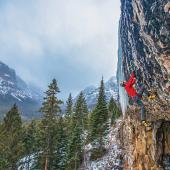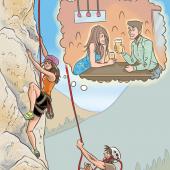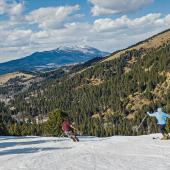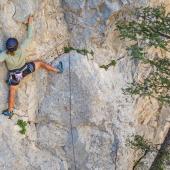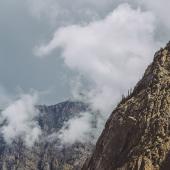Pitch Count
Autumn climbing in Montana.
It’s late fall in southwest Montana, the tail end of rock season and the start of ice season, and ideal conditions for both disciplines can be found between inclement weather events. The cool temps are great for those harder south-facing rock climbs down low, and make for some early freezing up high.
For early alpine ice, climb before snow conditions become cumbersome and hazardous. Be confident in your knowledge of snow and safety tactics in avalanche terrain before venturing up to these bigger faces.
To maximize the season, here are a few routes to get you started.
Rock
Bouldering
Some of the best bouldering areas in the state are located in the “Boulder Batholith” just outside of Whitehall. Approaches are 5-20 minutes, and the area is in a rain shadow, making it a great spot when it’s wet elsewhere. Those fickle days in the fall can be ideal for hard bouldering problems when a small rain squall won’t wreck your day. You simply wait, then climb again once it’s dry. Bring plenty of layers and a stove for hot drinks.
Single Pitch
This time of year is ideal for warmer south-facing walls. Winter Wall, just outside of Townsend in Hellgate Canyon, is perfect on colder, sunny days. The drive takes about 1.5 hours, and the approach to the climbs is about five minutes, accessing routes ranging from 5.10-5.13.
Multi-Pitch
For a weekend trip, Blodgett Canyon outside of Hamilton offers the best multi-pitch granite climbing in the state, with relatively easy approaches (30-90 minutes). The south-facing walls lend themselves to climbing in cooler temps, with classic routes ranging from 5.8-5.13. Autumn is ideal, as the area is plagued by ticks in the spring, unbearably hot in the summer sun, and snow can gather up on the approaches and descents in winter.
Ice
Beartooth Mountains
Ice Dragons, Winter Pants, Moon Burn. These three routes are all located on the same wall, Giant’s Belly, deep in the Beartooths. (See the Winter Dance guidebook for details.) Park at the East Rosebud trailhead and start walking, three to eight hours, depending on snow conditions. Some snow accumulation is necessary to help form these routes, but you’ll want to access them before the snow becomes too cumbersome and potentially hazardous. Make sure you “know snow” and start early. If you hit it just right, you’ll be walking in on firm snow and butt-sliding out.
Baronette Peak, Yellowstone
This peak has some of the best ice in the area, with some of the easiest access; however, massive avalanche paths loom above nearly all routes. Approaches range from 30 minutes to two hours. Late autumn can be ideal, just as the ice freezes and before too much snow has accumulated on the slopes. Even then, it’s still high-hazard terrain, where even a small slide can be treacherous.
Hyalite Canyon
The earliest of the classic climbs to form is Twin Falls, which I’ve climbed as early as November 2. Higher routes that form even earlier include The Tusk on the north face of Elephant Mountain, and Maiden Voyage on the northeast face of Maid of the Mist (which is all run-out, frozen turf, and rock), among others.
The Sphinx, Madison Range
I’ve climbed this route with all WI5 pitches in condition as early as October 3 with no more than boot-top snow accumulation. Like most alpine routes, the Sphinx has many small-hazard slopes. You don’t need much snow to sweep you off your feet and carry you off cliffs. Assess frequently and turn back if it’s questionable. I have retreated more than once due to snow hazards.
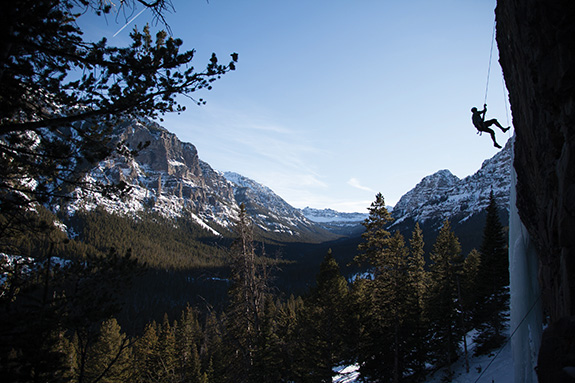
Sam Magro owns Montana Alpine Guides in Bozeman.







